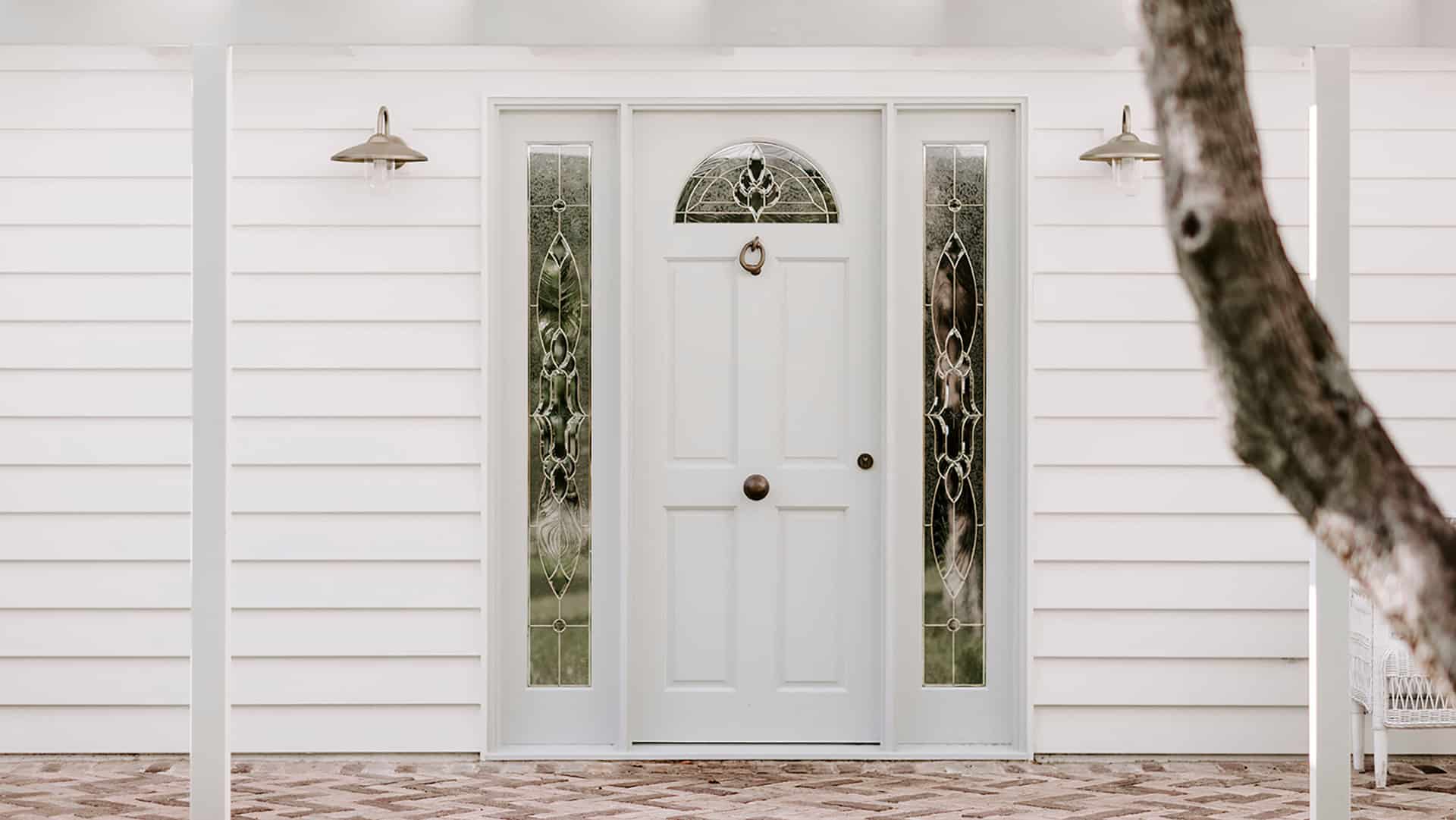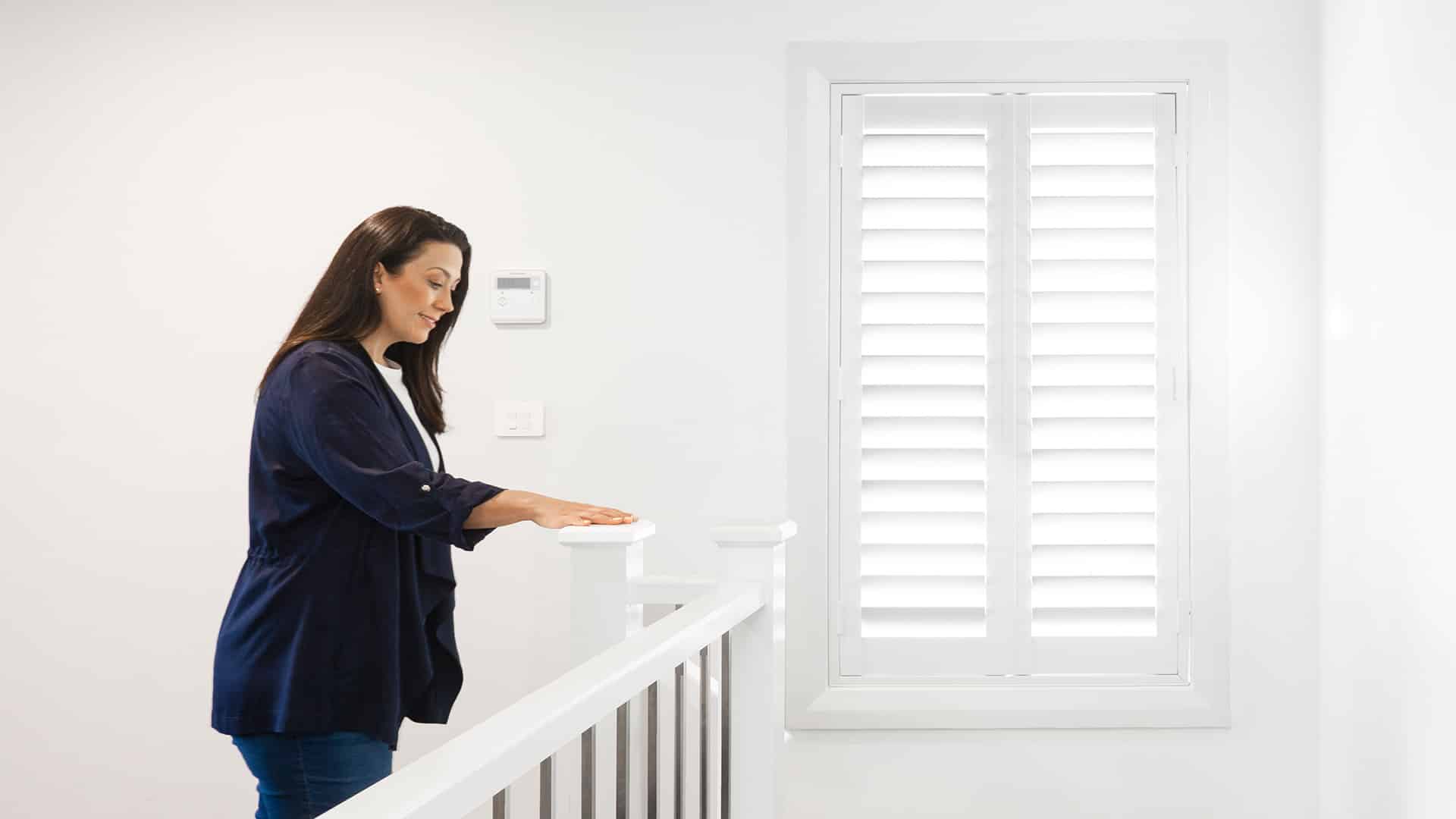Everything You Need to Know About Door Handle Types and Their Functions
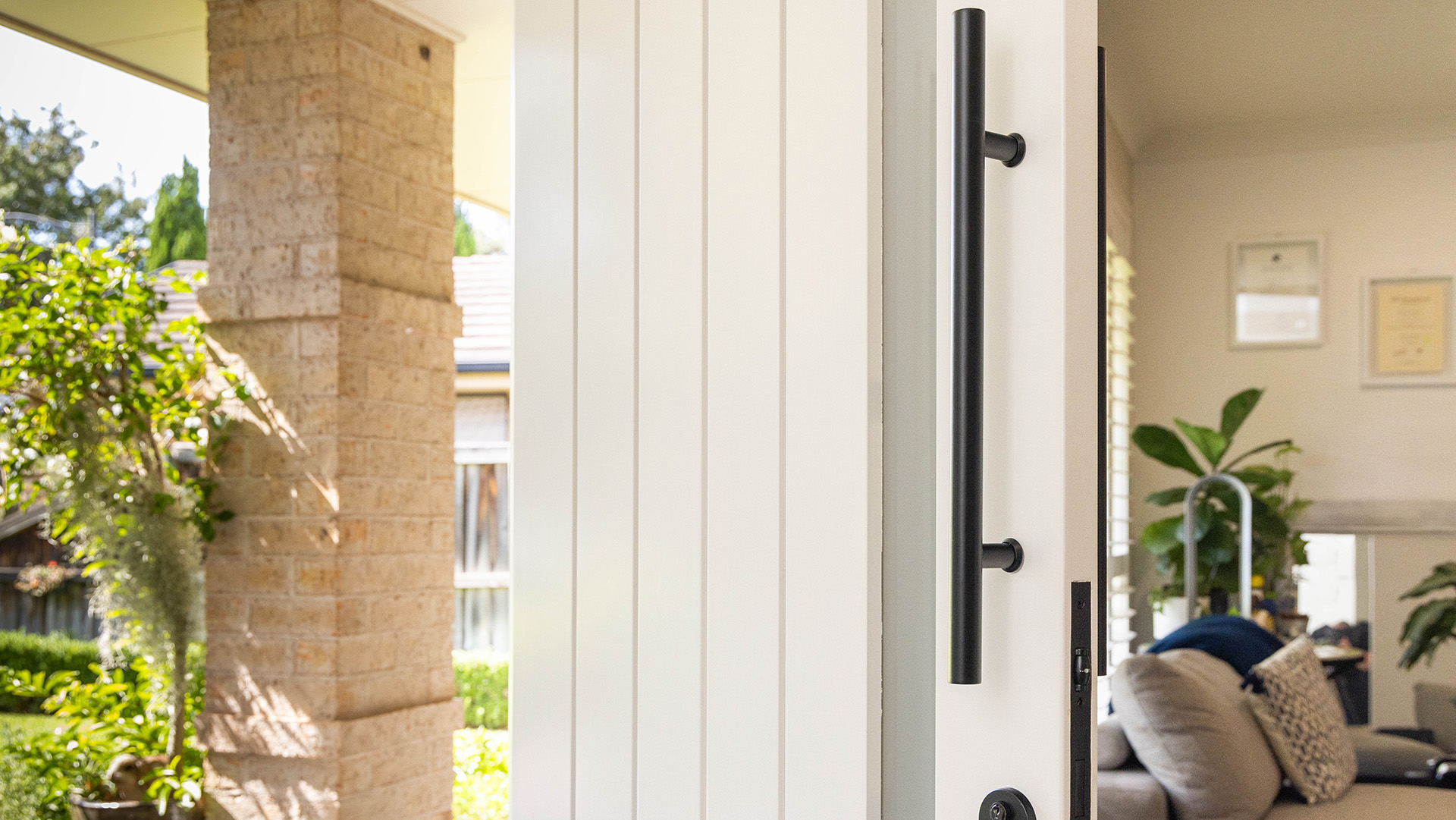
Door handles don’t always get the attention they deserve.
But the right handle can tie a room together, boost security, and make everyday life feel that bit easier.
We’ll walk you through the different types of door handles, how they work, and where each one fits best.
So if you’re a homeowner wanting to freshen things up, an interior designer chasing the perfect finishing touch, or a builder after practical, stylish hardware, this one’s for you.
Let’s turn that essential doorknob into a design decision!
Common Types of Door Handles
Lever Handles
Lever handles are one of the most common and user-friendly types of door handles.
They have a horizontal lever that you push down or lift to open the door.
You’ll often see them on internal and external doors in homes, offices, and commercial buildings.
Why choose lever handles?
1. Easy Use: Great for kids, older people, or anyone with limited hand strength. No need to grip or twist.
2. Functional: Can be combined with different types of door handle locks for bathrooms, bedrooms, or exterior doors where privacy or security is needed.
3. Versatile: Available in various styles and finishes to suit modern, traditional, or industrial looks.
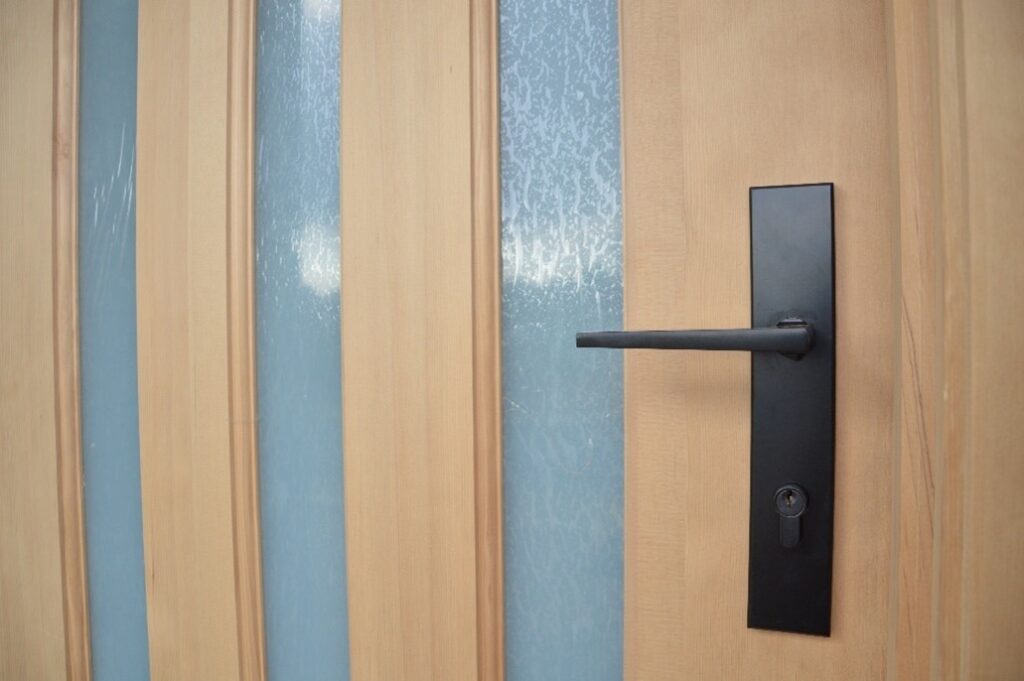
Knob Handles 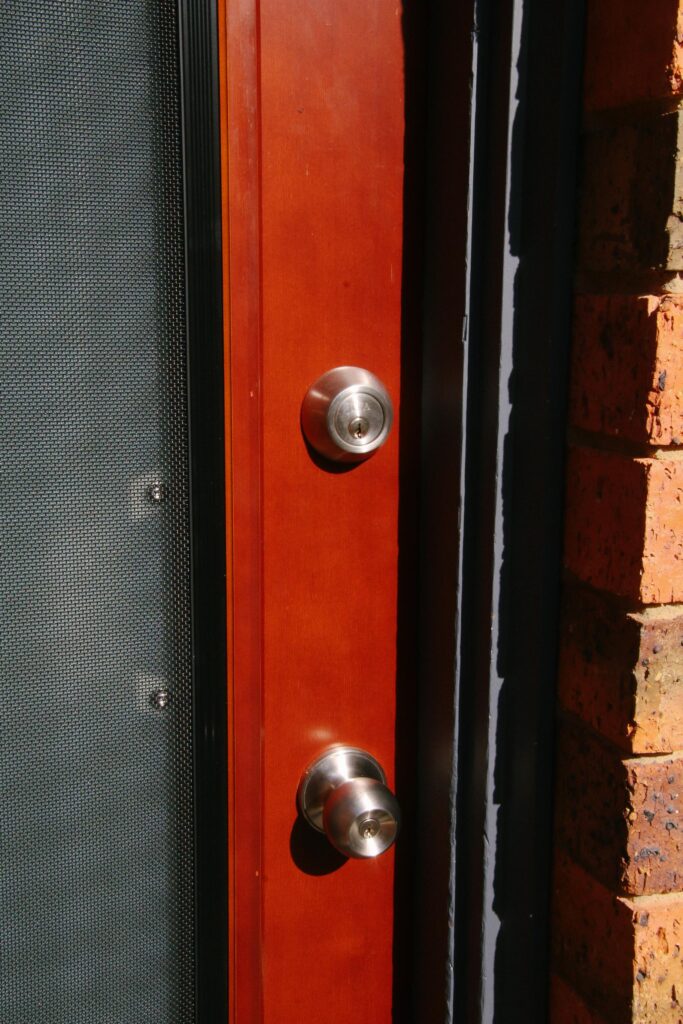
Knob handles are round or oval-shaped handles that you turn to open a door.
They’ve been a classic choice for decades.
Why choose knob handles?
1. Timeless Style: Their timeless look suits heritage homes, period renovations, and vintage-inspired interiors.
2. Compact Design: They take up less space than lever handles, making them ideal for smaller rooms or narrow hallways.
3. Versatile Use: You can get knob handles that simply open and close doors (called passage sets), or ones with a built-in lock for bedrooms and bathrooms (privacy sets).
Pull Handles
Pull handles are fixed handles that you grip to open or close a door, without any turning or twisting.
They’re commonly used on doors that slide rather than swing.
Why choose pull handles?
1. Saves Space: Perfect for doors that slide along a wall (sliding doors, barn doors, and glass doors), helping you avoid the swing clearance needed with traditional handles.
2. Easy to Grip: Simple to use, especially on large or heavy doors.
3. Compatible with Glass: Often used on doors with glass where standard handles may not complement the look of the door.
4. Modern Look: Their clean lines and minimalist design suit contemporary interiors.
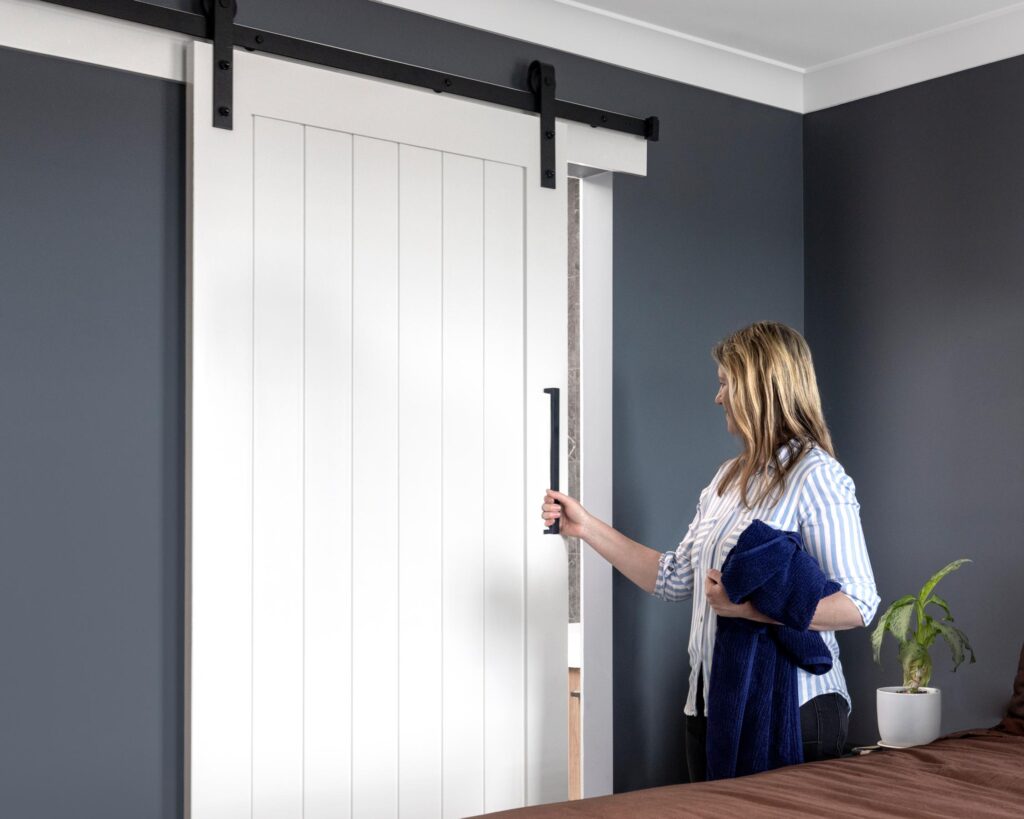
Flush Handles
Flush handles sit flat against the surface of the door.
You pull them using a small recessed grip rather than a protruding handle.
Why choose flush handles?
1. Space-Saving: With no parts sticking out, they’re ideal for tight areas or walkways where space is limited.
2. Smooth Door Function: Allows sliding or pocket doors to open and close freely without obstruction.
3. Safety: No risk of snagging clothes or bumping into the handle.
4. Minimalist Style: Offers a clean, sleek finish that blends into the door.

Privacy Handles 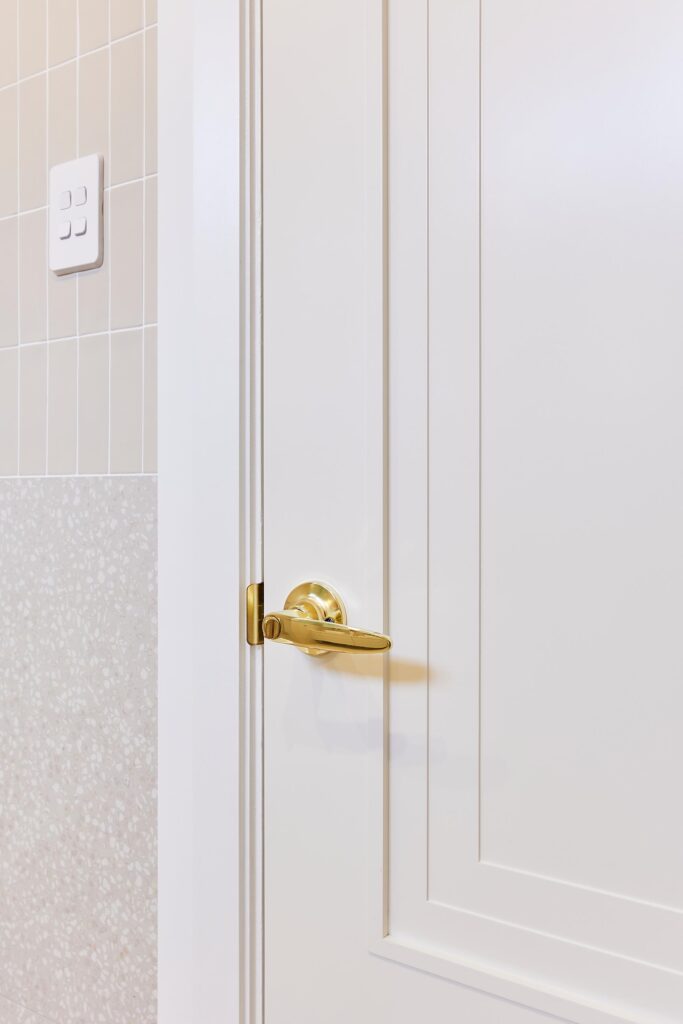
Privacy handles come with a built-in lock, typically operated by a push-button or turn snib (a small dial or knob on the inside of the handle that you twist to lock or unlock the door).
Why choose privacy handles?
1. Quick, Keyless Locking: Easily secure a room with a push or twist—no key needed.
2. Emergency Access: Can be unlocked from the outside, giving peace of mind to families with small children or older adults.
3. Personal Privacy: Great for rooms where privacy matters, but the complete security of a keyed lock isn’t required.
4. Streamlined Look: Keeps the door looking neat without the clutter of external locks.
Passage Handles
Passage handles are non-locking handles designed for doors that don’t require security or privacy, such as internal doors in hallways, wardrobes, laundry rooms, or living areas.
Why choose passage handles?
1. Unrestricted Access: Lets people move freely from room to room without any locking mechanism.
2. Easy Operation: No buttons, snibs, or keys, just a handle that opens and closes the door.
3. Low-Maintenance: Fewer moving parts mean less wear and tear over time.
4. Clean Look: Keeps doors looking uncluttered without extra hardware.
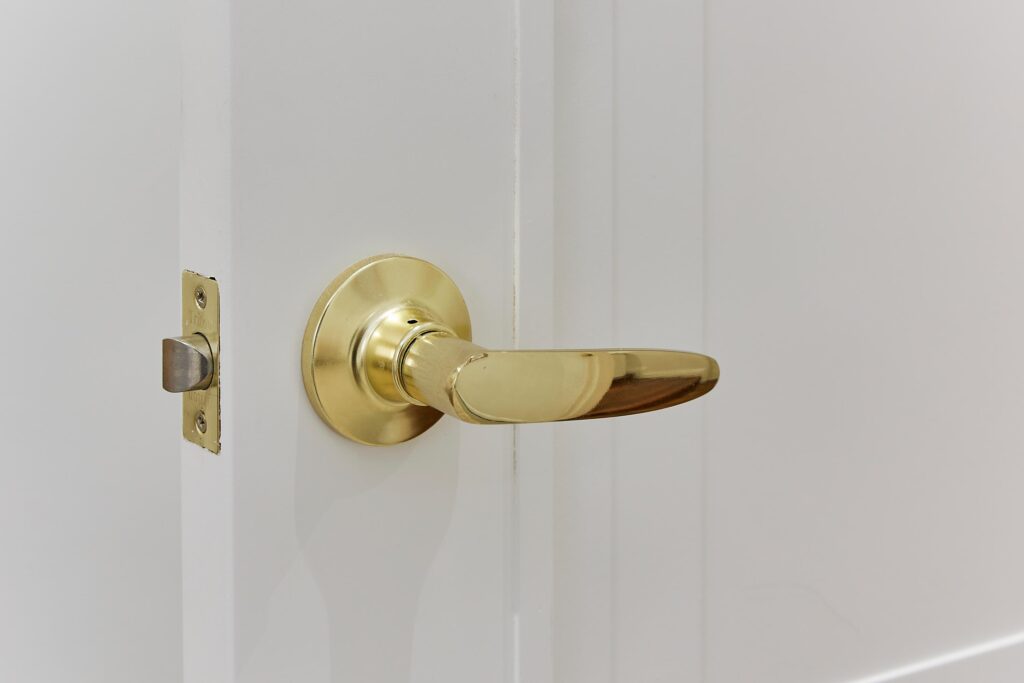
Materials Used in Door Handles
• Stainless Steel: Strong, corrosion-resistant, and modern in appearance.
• Brass: Durable with natural antibacterial properties and a classic finish that ages well.
• Aluminium: Lightweight, rust-resistant, and budget-friendly for high-traffic areas.
• Zinc Alloy: Cost-effective, versatile, and available in various finishes.
• Wood: Warm, natural look that suits rustic, vintage, or traditional interiors.
• Glass or Crystal: Decorative and elegant, often used as a statement piece in feature rooms. These are more ornate and generally available from specialist stores.
Choosing the Right Door Handle for Your Space
Interior vs Exterior Door Handles
Interior and exterior door handles serve different purposes, so it’s important to choose the right type for each space.
Consider
• Durability: Exterior handles need to withstand weather, wear, and frequent use, so look for tougher materials like stainless steel or brass. Interior handles don’t face the same exposure and can be lighter and less heavy-duty.
• Locking Mechanisms: Exterior handles typically include keyed locks or deadbolts for security. Interior handles may have simple privacy locks or no lock at all, depending on the room.
• Materials and Finishes: Exterior handles often use weather-resistant finishes to prevent rust and fading. Interior handles offer greater flexibility in terms of style, texture, and finish.
Style and Aesthetics
A handle’s design should complement doors and overall styling, not compete with them.
Try the following suggestions for popular interior design styles.
• Modern: Sleek lines, matte black, chrome, or stainless steel lever or pull handles.
• Traditional: Rounded shapes, warm tones like brass or bronze, and classic knob handles.
• Rustic or Farmhouse: Wood, aged metal, or wrought iron with textured finishes.
• Hamptons or Coastal: White, brushed nickel, or glass handles.
• Industrial: Black, gunmetal, or raw metal finishes.
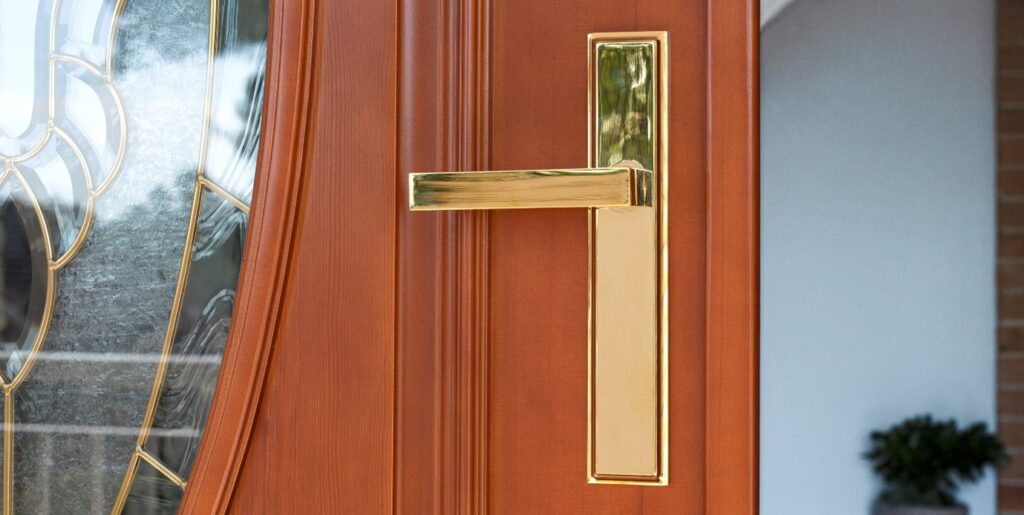
Functionality
Different spaces call for different functions. A handle that suits how the door is used will feel more practical day-to-day.
• Bedrooms and Bathrooms: Privacy handles with built-in locks provide comfort and control.
• Hallways, Living Rooms, and Wardrobes: Passage handles allow free movement without any locking.
• Front and Back Doors: Keyed handles or handles paired with deadbolts offer reliable security.
• Sliding or Pocket Doors: Flush or pull handles keep the door surface clear and accessible.
Durability and Maintenance
The material you choose affects not only how well your door handles hold up over time but also how much upkeep they require.
• Metal Materials: Options like stainless steel, brass, aluminium, and zinc alloys are known for their strength, resistance to wear, and ease of cleaning. Most only need a quick wipe-down to stay looking good.
• Powder-Coated Finishes: Provide extra protection against scratches and fading, particularly in coastal or humid environments.
• Smooth Surfaces: Easier to clean and less likely to collect dirt, fingerprints, or grime.
Budget Considerations
Affordable doesn’t have to mean boring.
There are smart choices available that give great value and a polished look.
• Zinc Alloy Handles: A popular budget-friendly choice that comes in a wide range of finishes and designs.
• Aluminium Handles: Lightweight and fitting for simple, contemporary interiors.
• Powder-Coated Finishes: Adds a stylish touch to basic materials without raising the cost.
• Minimalist Designs: Simple shapes and finishes often come at a lower price point while still looking clean and contemporary.
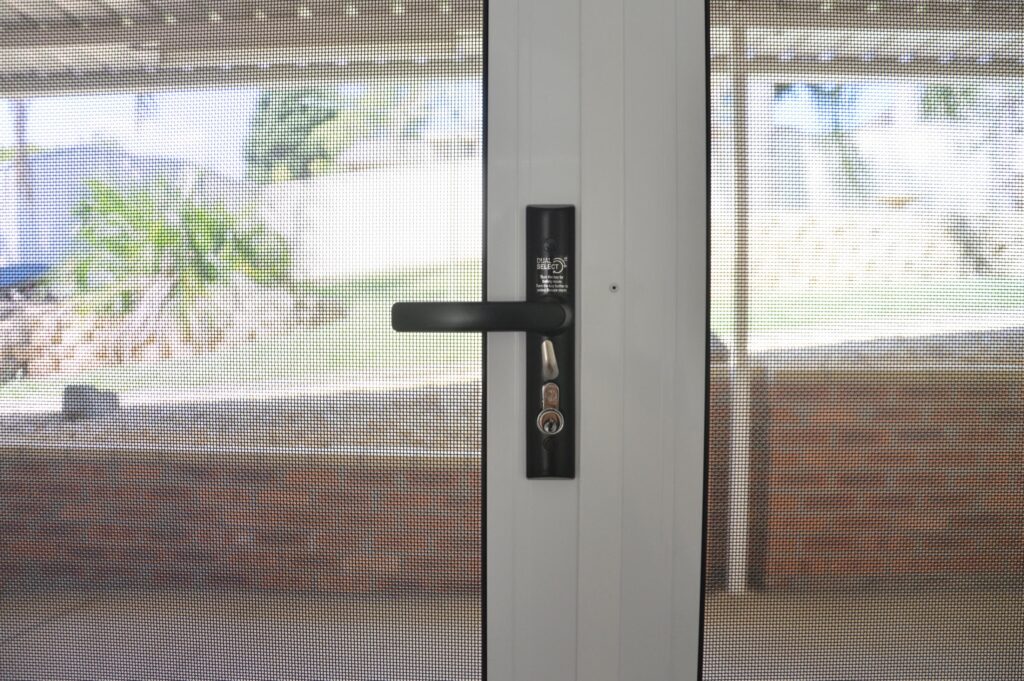
How to Install or Replace Door Handles
Tools You’ll Need
• Phillips-head screwdriver
• Flat-head screwdriver
• Tape measure
• Pencil or marker
• Drill (for new installations)
• Chisel (if adjusting the latch plate* or mortice**)
*Latch Plate: The metal plate on the edge of the door that covers the opening where the latch sticks out.
**Mortice: The hole carved into the door so that the main body of the lock can sit flush inside the wood.
Step-by-Step Guide
1. Unscrew the existing handle from both sides of the door. Remove the handle, latch, and strike plate (the metal plate attached to the door frame where the latch slides).
2. Measure the backset (the distance from the door edge to the handle hole) to ensure your new handle fits properly.
3. Slide the latch into the hole on the edge of the door. Make sure the angled side faces the direction the door closes. Screw it into place.
4. Line up the interior and exterior sides of the handle with the latch spindle and screw holes. Insert and tighten the screws evenly.
5. If replacing, remove the old strike plate and screw in the new one on the door frame. Check that it lines up with the latch for smooth closing.
6. Open and close the door a few times to check alignment, latch action, and handle movement.
Tips to Avoid Common Mistakes
• Don’t overtighten screws, as this can damage the handle or door surface.
• Make sure the latch is facing the correct way before securing it.
• If drilling new holes, double-check measurements and mark before drilling.
• Use a level to keep the handle straight.
The biggest tip to avoid making any of these mistakes is to call in a professional! They can save you time, protect the door, and guarantee a clean finish.
It’s especially helpful to enlist their help if you’re dealing with mortice locks or complex locking systems, glass, metal, or solid-core doors, or custom handles that require precision fitting.

FAQs
What Are the Different Types of Door Handles?
The main types of door handles are lever handles, knob handles, pull handles, flush handles, privacy handles, and passage handles.
Each type suits different functions, from everyday access to added privacy or style.
Which Material Is Best for Door Handles?
Stainless steel is one of the best all-around options because it’s strong, rust-resistant, and low-maintenance.
Brass is also durable and has a classic look, while zinc alloy and aluminium are affordable, lightweight alternatives.
The best material depends on where the handle will be used and style preferences.
Are Door Knobs Better Than Lever Handles?
Lever handles are easier to operate, especially for children, older adults, or anyone with limited hand strength.
Door knobs look more traditional. Neither is strictly better—it depends on the room, user needs, and design style.
How Do I Choose the Right Door Handle for My Home?
Consider the door’s function (e.g. locking or non-locking), the style of your home, and the handle material.
Match finishes with existing hardware, and choose durable, low-maintenance options for busy areas or exterior doors.
Upgrade Your Doors with High-Quality Handles from Doors Plus
Visit your nearest Doors Plus showroom today to browse our range of high-quality interior and exterior handles.
You’ll find all types of door handles to choose from.
But we don’t just supply handles (and doors!).
With our free measure and quote service, easy delivery, and expert installation, you’ll get the perfect handle and door fit with “No fuss”!
If you have any questions, call us on 1800 575 045 or fill out the online form and we’ll be in touch.





